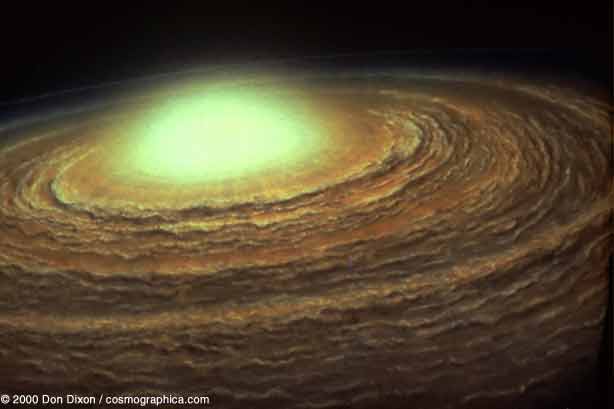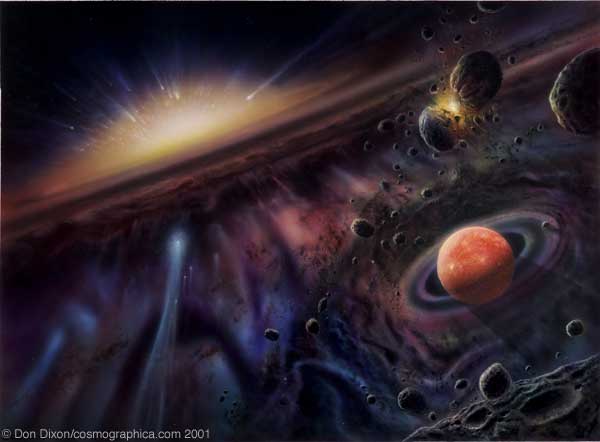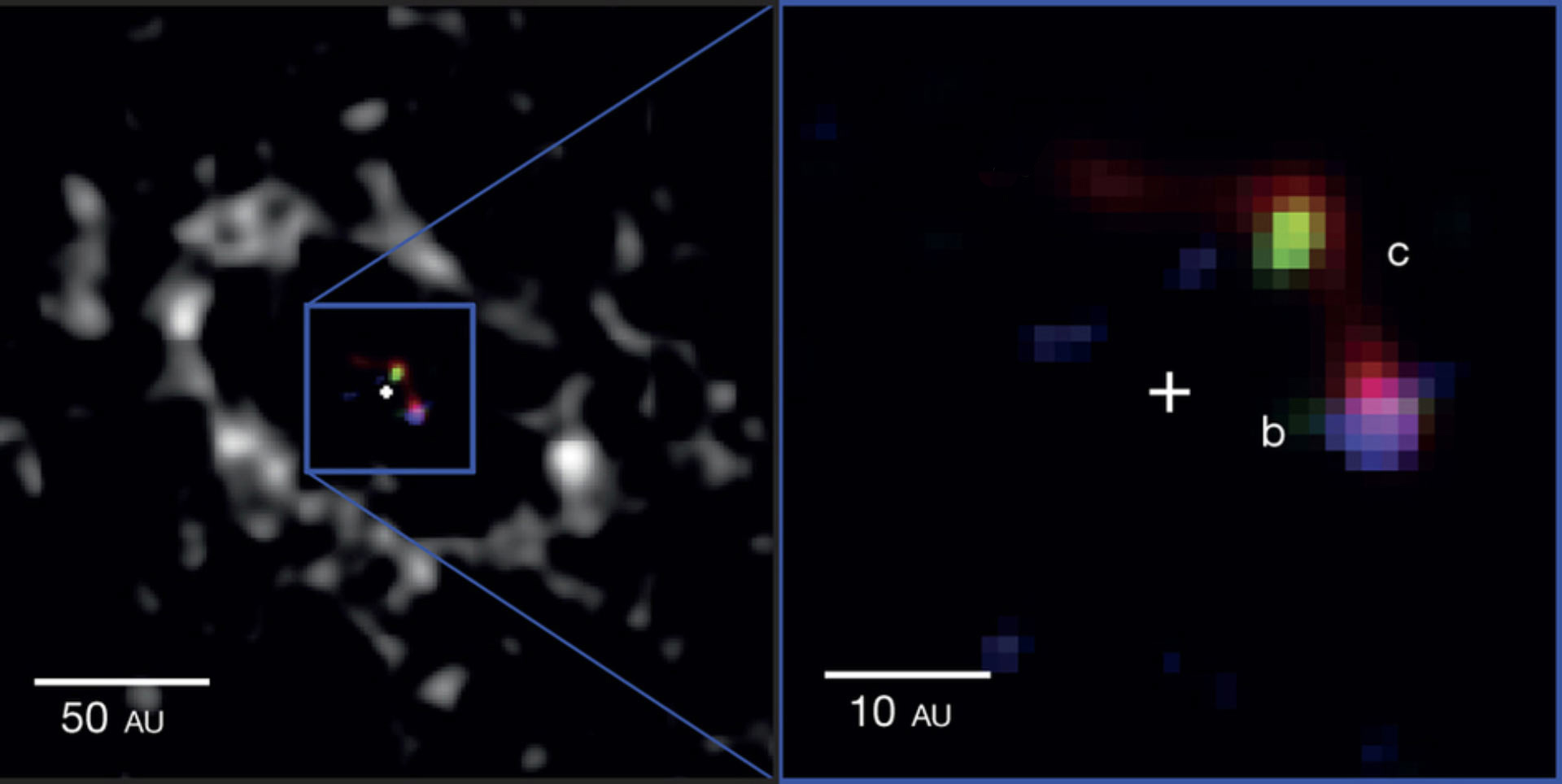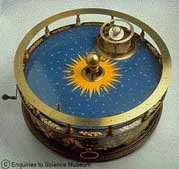 Formation of the Solar System
Formation of the Solar SystemKey points: Steps in forming a planetary system; the Late Heavy Bombardment; evidence for other planet systems - Doppler recoil, transit, debris disk
| As with similar stars, the very young Sun was therefore surrounded by gas
and dust leftover from its formation. Through a series of collisions between the gas
molecules and dust particles, this material became organized in the form of a circumstellar disk. The circumstellar disk is where the planets formed.
|
 |
 |
This movie shows
the forming system
of planets. We rocket through a molecular cloud, penetrating the cold cloud core where
the Sun is being born. As we approach, we see the disk of material orbiting the protostar, the end point of the animation just above. It begins to glow bright red as
energy is released by its contraction under gravity. Gas clouds come and go above the disk
and then a wind starts from the young Sun and clears excess gas from the disk, leaving the
young planetary system. Not shown, eventually the star blows away the excess gas and some
of the dust to become visible.
(reload to restart lecture animations) |
 |
At an early stage (less than a million
years old), when the young Sun was still surrounded by the dense disk of
both gas and dust, the gas giant planets Jupiter and Saturn formed. The
simulation below illustrates the growth of instabilities in a disk and the
eventual formation of planets. (from Ken Rice, (http://faculty.ucr.edu/~krice/)
|
 |
Once the gas had been ejected from the
system, the possibilities for giant planets forming were over.
"Terrestrial" planets (like the earth) can take longer to
form. Planet embryos formed in the disk within a few million years and continued to grow
through multiple violent collisions for millions of years after the gas had left the system. (from
Chris Butler, http://www.lpi.usra.edu/science/hahn/web/)
Animation below from G. J. Taylor, http://www.psrd.hawaii.edu/Nov06/hit-and-run.html
|
 |
As this process continued, young terrestrial planets formed in the disk but still collided frequently, and comets fell into the young Sun at a high rate. (top and bottom pictures from Don Dixon) |
 |
Until very recently the process of planet formation just described had never actually been seen. However, here is a very high resolution image of a young star, and we can see the outer ring, the inner clearing, and within it two young, massive planets (objects b and c)! The star itself has been eliminated from the image, but its position is marked by the cross. (from Stephanie Sallum et al., 2015, Nature 527, 342) |
 |
However, the excitement was not over for the Solar System. Around 700 million years after the formation of the system, Jupiter and Saturn got into orbits where the period of Saturn was exactly twice that of Jupiter. This "orbital resonance" caused strong interactions because of the continuously repeating gravitational effects from these two massive planets.* The outer planets were shifted into their current orbits as a result. At the same time, the overall gravitational field of the system kept changing in ways that resulted in the ejection of most of the smaller bodies that had not yet been captured into planets. As these bodies shifted orbits, there was a period of high impact rates, called the Late Heavy Bombardment. In this computer simulation of the process, the Sun is in the center, the circles are the orbits of Jupiter, Saturn, Uranus, and Neptune, and the green dots are the smaller bodies. The system appears to be stable as Saturn and Jupiter migrate slowly toward the 2:1 resonance, but when they reach it Uranus and Neptune are scattered into their current orbits and most of the smaller bodies are very quickly thrown out of the system - it is a cataclysm! (The event occurs a little late compared with the solar system in this particular simulation.) (from http://www.psrd.hawaii.edu/Aug06/cataclysmDynamics.html)
|
|
"Children of the Sun," by Roger Francois, The Electric Gallery, http://www.egallery.com/francois.html
|

Mechanical model of the solar system, or orrery, made in 1712 for the Earl of Orrery (hence the name).http://www.sciencemuseum.org.uk/on-line/treasure/objects/1952-73.asp |
|
Click to return to syllabus |
||
| Click to return to Star Formation | hypertext |
Click to go to Overview of the Solar System |